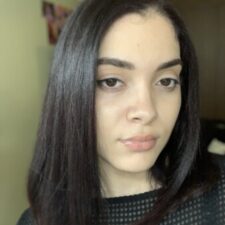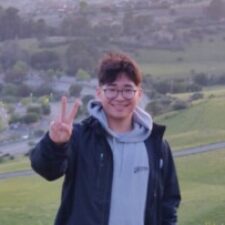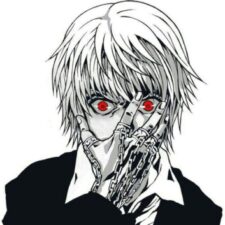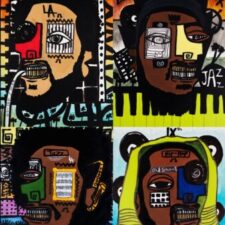You must be logged in to reply to this topic.
- Feb. 2 (c) next video Cinematic Techniques Pt.One
-
February 3, 2023 at 11:28 am #89705

Prof. MasielloParticipant(This is part one of a semester-long series that will conclude in December.)
Next, please watch the presentation called “Cinema I.avi.”
https://www.dropbox.com/s/3mxn2yvn83x5082/Cin%20I.avi?dl=0
(direct link)Remember you may have to copy and paste the URLs.
Then, as you did for our first class’s video last week, please answer the following parts:
a. Name three different things you feel you learned.
b. Mention something you liked about the presentation.
c. Ask at least one question that now comes to mind about this presentation.
All of today’s work is due before our next class, let’s say by 10:00 PM Thursday.
REMEMBER: You are supposed to have finished reading the whole novel Lolita, reading, not skimming, by Sept. 15, two weeks from now.
-
This topic was modified 1 year ago by
 Prof. Masiello.
Prof. Masiello.
February 2, 2024 at 3:57 pm #92262
Tshari YanceyParticipanta. A movie scene where the audience is looking down at that the scene with a Birds Eye view is just a set with no ceiling I found that interesting because it was something I always wanted to know. So lighting equipment, the camera, and mics are accommodated.
a2. To make it look like an actor was walking on the ceiling they moved the room set rotatingly as the actor walked.
Tshari, the movie in question is not worth watching but that one scene is legendary. Here’s a breakdown of how it was done:
https://www.youtube.com/watch?v=CNSHjZmvZTM
a3. The last thing I learned what the frame within a frame shot is a focal point shot framed by any distinct shape or rectangle. It reminds me of the ending credits of looney tunes where they put the circle around the last cartoon character for the episode and it closes in on them. You are right!
b. This presentation covered some of the most coolest cinematic shots. I would always watch these movies and say “how did they shoot that”, also the definitions to what the shot is, the example of the shots as described.
c. Was the camera backtracking backward down the steps in ‘Frenzy’ indicating to the audience a beware signel?
I would say it was Alfred Hitchcock’s way of letting the audience imagine what was happening. Sometimes our imagination is more satisfying when it is challenged. Also, real film enthusiasts would marvel at the unique camera movement.
-
This reply was modified 1 year ago by
 Prof. Masiello.
Prof. Masiello.
-
This reply was modified 1 year ago by
 Prof. Masiello.
Prof. Masiello.
February 2, 2024 at 10:16 pm #92271
Alyssa skerretParticipantA) For starters, I didn’t know there were various types of cinematic techniques. Panoramic openings have been used in different ways and it’s interesting to see different kinds of panoramic openings throughout the years. In Westside Story, the filmmakers used a helicopter to capture the setting of the film.
Nowadays, Alyssa, drones are used rather than helicopters to capture overhead landscapes.
I always wonder how filmmakers capture scenes from above ground level. As someone who watched *Midsommar I never took noticed on how the camera turns upside down, which foreshadows that something bad is going to happen later on in the film. Lastly, I got to discover how filmmakers can make an optical effect of an actor walking on the ceiling without using cgi, instead the room was set up to rotate as the actor walked.
*interesting trivia: the old man who jumps off a cliff to his death in Midsommar was a boy actor in one film in the 1970s, Death in Venice. He was the subject of a 2022 documentary, The Most Beautiful Boy in the World
THE MOST BEAUTIFUL BOY IN THE WORLD – Official Trailer (youtube.com)
The above trailer will show him old and young!
B) I appreciated how informative and straightforward the presentation was in explaining the various cinematic techniques through different kinds of films.
C) What was the point of the cgi double exposure in Blade Runner 2049? Did the filmmakers use two different actresses to use cgi to get the double exposure effect or is it the same actress we see before the double exposure effect is shown?
It is two different actresses, one of whom has done major acting roles in the past two years: Ana de Armas.
The point?–that in the future technology will affect people in intimate ways.
-
This reply was modified 1 year ago by
 Prof. Masiello.
Prof. Masiello.
February 5, 2024 at 11:41 pm #92392
Angel PadillaParticipantA)
– One thing that I learned about the presentation was the term “intertitles.” I’ve definitely seen some examples of silent films where transition cards show words that indicate what the character is saying. I didn’t know that there was an actual term for it which is honestly a really cool name as a method of using dialogue. Not only are intertitles used for dialogue but it can also be used to narrate a story as seen in the movie “Gone With The Wind.” I remember watching that movie in the fifth grade so seeing it appear in both this presentation as well as the previous one felt nostalgic. Intertitles can be used to display both prologues and epilogues. A prologue is basically a prompt that comes before the start of a story. An epilogue is basically the same thing except it appears directly after the start of a story.
Angel, an epilogue has to be at the end of a film.
– Another thing that I learned about the presentation was how useful panoramic openings can be. A panoramic opening is essentially the intro of a film that reveals the setting of the story’s environment. A really cool example that was shown in the presentation was from the movie “West Side Story,” where the opening scene was shot entirely out of a helicopter. It does a really nice job at displaying the city that the main cast of characters live in, and these characters are later revealed in the end of the panoramic shot.
– One more thing that I learned about the presentation was when the topic of rotating cameras was brought up. In the movie “Royal Wedding,” there’s a scene where the actor dances on the walls of a set. The camera work makes it seem as if the character is dancing on top of the ceiling and is hanging upside down when in actuality it’s the set that is being moved, making for a great optical effect. It’s a really charming scene to look at and it creates such a captivating illusion.
Angel, the movie in question is not worth watching but that one scene is legendary. Here’s a breakdown of how it was done: https://www.youtube.com/watch?v=CNSHjZmvZTMB)
– One thing that I liked about the presentation was how it included the prologues that appear in the Star Wars movies. I started getting into those movies during my high school year and was pretty much entranced with how everything was shot. I absolutely love the soundtrack especially since it’s composed by one of my favorite composers, John Williams. It’s overall a really incredible franchise that pretty much defines a lot of why I really love the fabrication of filmmaking.
– Another thing that I liked about the presentation was how it talked about creative camera placement. An example that stood out to me was in the movie “Bound” where the camera moves around the phone chord. In the scene that’s being presented, a woman is trying to call another woman on the phone. As soon as the number gets dialed, the camera follows the cord that’s attached to the woman’s phone and as soon as the camera is done following, it then transitions to another cord. The camera follows the cord but only this time, instead of the camera going in a straight direction like before, the camera ends up following the tied knot that’s attached to the other woman’s phone. It makes for a really fun scene and it was a very creative use of filmmaking.
– One last thing that I really appreciated from the presentation was how the use of montages can create for an effective scene. As soon as the topic was brought up I immediately thought of Rocky, which is undoubtedly my favorite sports movie franchise of all time. My favorites in the franchise have to include Rocky 3 and 4 just based on the training montages alone. It does a great job at highlighting how many weeks and months have passed as Rocky grows stronger and faster with each event. It honestly makes for really fun storytelling.
C)
– To make a comment, I really like the pacing and editing style of this presentation and how it introduced me to a lot of new and unique shooting techniques. One technique that stood out to me was the use of a steadycam, which is basically when a camera is attached to the actor in order for the audience to see the character’s perspective. An example that was shown in the presentation was from a movie titled “Requiem From A Dream,” where a character is seen frantically running. He ends up getting apprehended by the police but it honestly made for a really intense chase scene. A question that I’m wondering is if this shooting technique has been used in other movies before? Because I’m assuming that this type of camera work can be found in most action movies if I’m not mistaken. Point is, I definitely want to see more of this shooting technique not only in the action genre, but for the horror genre as well.
Years ago cameras were too big to attach to actors. You can probably Google when steadycams were first used in feature films.
-
This reply was modified 1 year ago by
 Prof. Masiello.
Prof. Masiello.
-
This reply was modified 1 year ago by
 Prof. Masiello.
Prof. Masiello.
-
This reply was modified 1 year ago by
 Prof. Masiello.
Prof. Masiello.
-
This reply was modified 1 year ago by
 Prof. Masiello.
Prof. Masiello.
February 7, 2024 at 12:33 am #92435
Mu SongParticipantA1. I learned that how
they[filmmakers] introduce or start the film has a lot of meaning, I noticed this whentheythe video described the panoramic shot throughout the city showing many windows to reflect that any one of the windows is a story. I’ve seen multiple movies using it and never thought of the hidden meaning.A2. Music can play a large part in the film whether it’s setting the mood or giving hints of what the film will be about like in “The Shining” there is foreboding music to suggest the presence of supernatural forces.
A3. Angles of the shots can expose new sides of characters that can be hard to see in “Psycho” there’s a low angle showing his face from the bottom and it shows how nervous the candy-chewing manager is. Yes, but there should be a reason for unusual angles. Here it was to show the man was nervous.
B. I appreciated how the presentation was very simple and clear. It describes the technique used by the film, shows us examples of what films use the technique, explains how certain shots were done or created, and explains what certain shots or angles mean or foreshadow.
C. How would they move or rotate the set in “Royal Wedding” to create the illusion that the actor was on the ceiling and the walls?
Mu, please see the link that I already added to two of your classmates’ replies above.
-
This reply was modified 1 year ago by
 Prof. Masiello.
Prof. Masiello.
-
This reply was modified 1 year ago by
 Prof. Masiello.
Prof. Masiello.
February 7, 2024 at 1:46 pm #92445
MehrinisoParticipanta.
– One thing I learned was about showing both faces in a conversation cinematic shot. This cinematic shot is usually used to make the scene more intense and dramatic. With all the movies I’ve watched when this particular shot comes up, it’s either making the scene more dramatic or even bringing in some type of horror into the movie.
– The frenetic montage using newspaper clippings and video footage was news because I never paid attention to what the actors/actresses step over in a movie scene or what’s being displayed on a screen. This montage does enhance the movie and can give the audience a background story of what’s going on.
-Another thing I learned that I always wondered about is how the actors go underwater and play their parts for that long. It’s shocking how CGI has so much effect on the editing of the scenes to make them look realistic.The point of underwater scenes using CGI, Mehriniso, is that actors aren’t even underwater. Only in the old days did they stay in water in what is called “practical effects,” the opposite of CGI.
b.
– One thing I liked about the presentation was how it covered so many genres of movies. In other words, to show how a certain shot was used the use of movies as an example from different genres made the presentation interesting along with giving the audience a better understanding that those certain cinematic shots can be used in any kind of movie we watch. Yes.c.
As the cinematic shot Dutch angle is used in the movie “East of Eden”, why is it called Dutch angle? Were there any contributions from the Dutch to call it that angle? I am not sure because it was first used by German directors. Good question. It can also be called a “Dutch tilt,” a “canted angle,” or an “oblique angle.”-
This reply was modified 1 year ago by
 Prof. Masiello.
Prof. Masiello.
February 8, 2024 at 7:16 pm #92543
RafiParticipantA. One of the things I learned during this presentation is back then in the earlier years movie producers would find interesting ways to make meaningful scene a bit more impactful to the audience even with a lack of cgi, for example in the movie “The Texas Chainsaw Massacre” I am assuming they put a camera on a pipe and slid through the persons head to show the audience the actors reaction and the aftermath of the scene. That movie is recent and takes advantage of CGI. The head in question is just a fake head with a hole. CGI allows for the camera zooming away from the front seat passengers as the camera pulls back.
A2. Another thing I learned is how impactful music is to a movie scene for example in the movie “psycho” while the actor is walking upstairs in the back is playing eerie music playing I am assuming to let the audience know that something is going to happen pay attention. Yes.Psycho is a classic thriller noted for its music.
A3. Another thing I learned is how the directors used camera angles to show the current feeling or emotion of the current actor, for example in the movie “the shining” the director is under the current actor [Jack Nicholson is too famous to merely be called a current actor] to show the mix of emotions or actions he is showing.
B. One thing I liked about the presentation is how it was very straight forward, most scene was very clearly showing us how well the camera placement and use was.
Good, Rafi.
C. a question I have about the presentation is in the movie three kings I wonder if they used Fake, animal lungs or a set of human lungs to show what happens to a actors lungs during the movie. Another question I have about the presentation in the movie top gun maverick was one of the reactions of the actor real?
The internal organs are not real in that war film. The camera is not really inside a body. The actors were probably excited, but as trained actors they also know how to show reactions better than a non-actor would.
-
This reply was modified 1 year ago by
 Prof. Masiello.
Prof. Masiello.
-
This reply was modified 1 year ago by
 Prof. Masiello.
Prof. Masiello.
February 8, 2024 at 9:25 pm #92553
TravisBowryParticipantA) – I learned that there are many different types of shots in movies and they all have a meaning behind it. Closeups, POV shots, full shots etc.
– Tilting the camera can give you different meanings. In one movie the tilt showed the characters distortion to her surroundings and in another movie the tilt showed a strained relationship
– Music can affect the mood of a scene. An example of this a training montage will make you feel more hype about a scene while music can also make a scene feel more ominousB) One thing I liked about the presentation is seeing the history of filmmakers in a way. Seeing how far we have come technology wise and skill wise to get the best shots needed for a scene.
C) Is it harder or easier to create different types of shots in animation movies? It has to be easier to do things in animation, Travis, because the filmmakers are not dealing with cameras, actors, sets, lights, etc.
-
This reply was modified 1 year ago by
 Prof. Masiello.
Prof. Masiello.
February 8, 2024 at 10:01 pm #92561
Bryan JimenezParticipanta1. One of the things that I learned from the presentation is that different varieties of shots can be used to help tell stories and when the camera moves in/out it advances the story. The second thing that I learned from this presentation is the impact music has on a scene in the film. It helps to build emotion and suspense that you wouldn’t normally get if there was no music or if the music doesn’t relate to a specific scene. Lastly, I learned the reason why the camera shakes in some films is to have realism as if it were recording from a phone.
We will see more about music and silence in a May presentation, Bryan.
b. One thing that I liked about the presentation was the various film clips that represented each film technique that was discussed in the presentation.
c. Why are “repetition” and “multiple exposures” important in film making? They are not important. They are just creative choices, frankly not often used.-
This reply was modified 1 year ago by
 Prof. Masiello.
Prof. Masiello.
-
This reply was modified 1 year ago by
 Prof. Masiello.
Prof. Masiello.
February 8, 2024 at 10:02 pm #92562
Angel OrdonezParticipantI learned the placing the character in center frame creates a distinct, stylized look. Along with this I learned how camera angled can really emphasize the mood of the scene. One example could be the camera pointed behind the character insinuating a stalker. Lastly, changing the background and zooming in enables a sense of change in the relationship between two characters, this is something I just didn’t know at all.
It is an effect I have not seen other than in Goodfellas. I included it because it is subtle and interestingly creative.
I enjoyed learning about the influence camera angles have in a scene.
c. Ask at least one question that now comes to mind about this presentation.
Are these proven methods of filming proven method or just happen to be what works ? Both. Once someone does something it may catch on as a technique. If it feels wrong after the film is done, it probably won’t be used again.Angel, it seems pomegranates are sexual symbols, but not in Western culture. The closest in the video today was the monologue about figs in Women in Love (1970). It is a very fine film.
-
This reply was modified 1 year ago by
 Prof. Masiello.
Prof. Masiello.
February 22, 2024 at 10:14 pm #92889
NailaParticipanta) It seems like sometimes shakey camera work is used to represent the character’s confusion and/or unease. I also learned that to sometimes have a great overhead shot, the set would call for no ceiling. Finally, it was interesting our emotions could be manipulated by camera work.
b) I liked how the presentation covered both recent and older films showing us how the same technique has progressed.
c) Do filmmakers sometimes make a choice in camera work to make it look cool or is there always meaning behind it?
September 15, 2024 at 8:27 am #95535
Adonis CParticipanta: I found it really interesting how important music is in movies. It’s clear that a good soundtrack can build up tension or excitement in a scene, like the chilling music in “Psycho.” This shows how sound and visuals work together to make a film more engaging. Another thing that stuck with me was how camera movement can totally change how a story is told. Things like panning and zooming can really shift how we see and feel about a scene. For example, panoramic shots are often used to show where the action is happening, while steadycams get us right into the point of view of a character, making everything feel more real and intense. Lastly, I learned about how directors use framing and where they place characters on the screen to tell stories. Different camera angles can suggest power or weakness and add depth to the story without dialogue.
b: What I really liked about the presentation was how it broke down various film techniques with clear examples. I was aware of some in the past but could not put a name to it. Showing clips from different movies made it easy to understand these ideas by seeing them in action. It helped me connect technical concepts with movies I know, which helped things click into place.
c: How do filmmakers decide which visual techniques to use when they’re adapting a book into a movie, and how do they make sure these choices help the story instead of taking away from it..
-
This topic was modified 1 year ago by
You must be logged in to reply to this topic.


